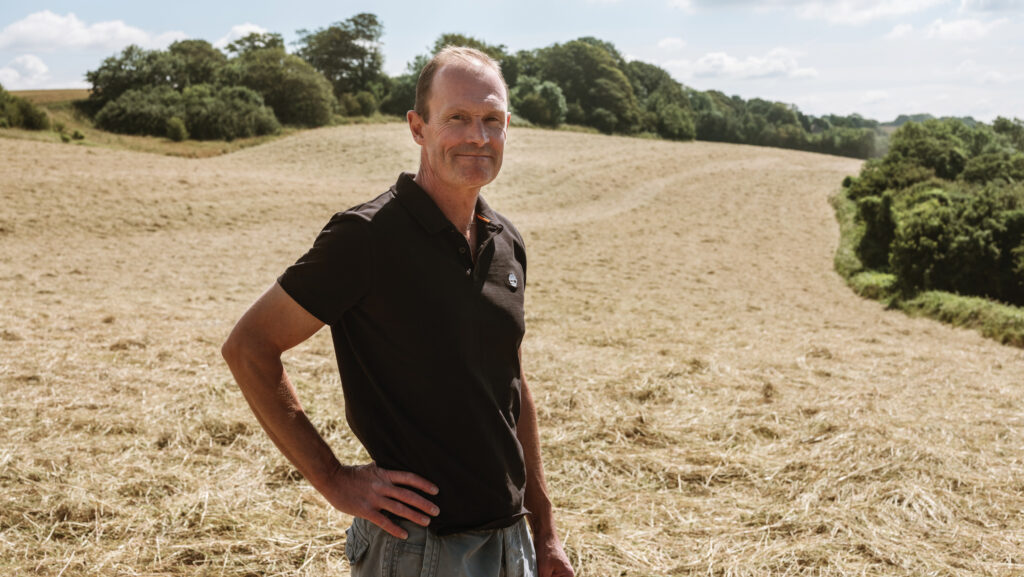Farmer Focus: OSR yields return to pre-flea beetle levels
 Andy Barr © MAG/Colin Miller
Andy Barr © MAG/Colin Miller Our harvest kick-started earlier than usual with a crop of oilseed rape on some of our sandy land. We were then rudely interrupted a few hours later by a worryingly heavy and prolonged downpour.
However, a couple of drying days later it did turn out to yield back at pre-flea beetle levels with, what seemed to me, noticeably less adults in the grain store.
As for the impact of the downpour, and as a natural sceptic, I have always questioned the efficacy of genetic pod shatter resistance and sticky sprayed on coatings but, who knows, maybe they did help?
See also: How crop nutrition can avoid insect and disease
As temperatures temporarily soared, the winter barley went from very wet, to very dry in a couple of days. Although I don’t have final weights yet, it did seem to have a reasonable hectolitre weight and yield.
Fittingly, one of these birds landed a few metres from me on my grain store in a quiet moment for trailers, but it was actually the barley yellow dwarf virus (BYDV) tolerance that made me grow the variety Buzzard.
I’m so pleased it can actually yield, as well as be grown without any insecticides, given the disappointing experiences I had with Amistar and Rafaela in the past.
It’s a shame I’m hearing that seed production has faltered as I believe all cereal varieties should have this trait, but let’s hope Kestrel will take over.
I did have a look at the new milling BYDV-resistant variety Goldfinch, but I worry that, with a 15% yield deficit to my current Extase in AHDB trials, it might give me another Wolverine experience where, in the absence of any insecticide spraying, the resistant variety still yields less than the non-resistant.
I also fully appreciate the need for breeders to get a return on their investment so that we can have these new traits.
However, I’m afraid I just find the Breeders Intellectual Property Office royalty scheme a bit annoying. I’d rather just pay a set price per tonne for the seed as usual.


